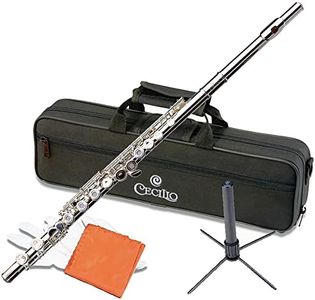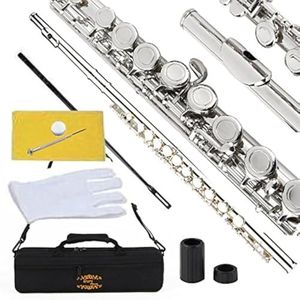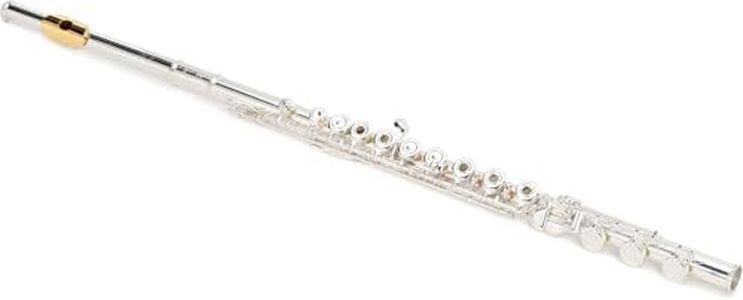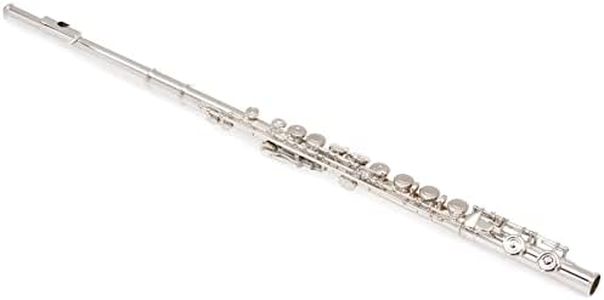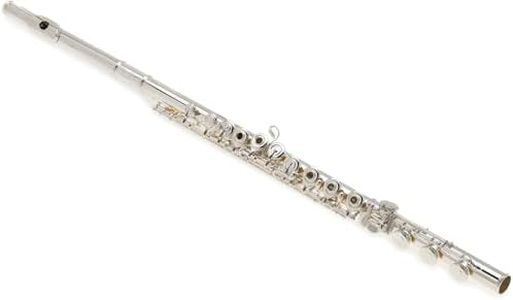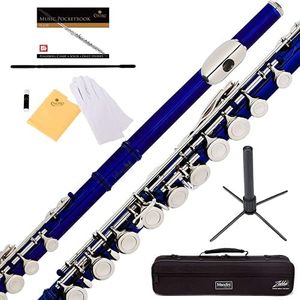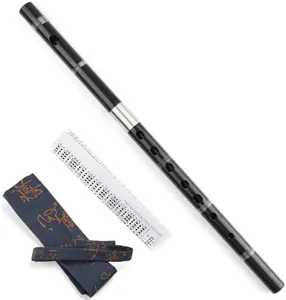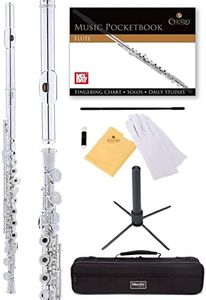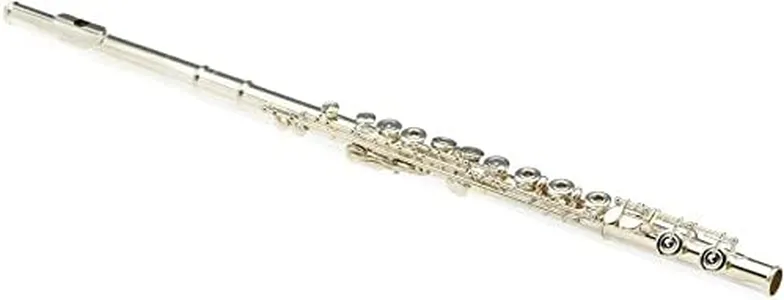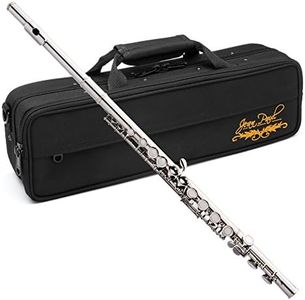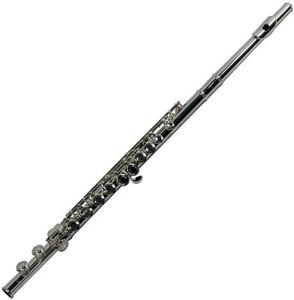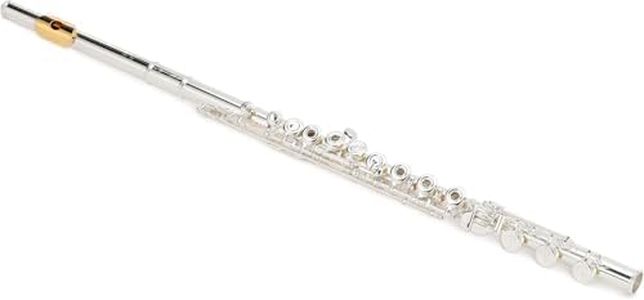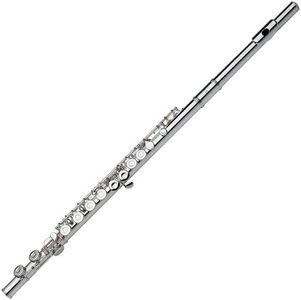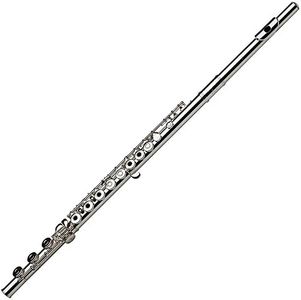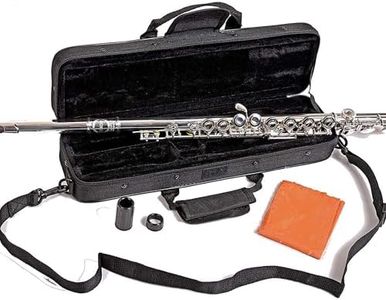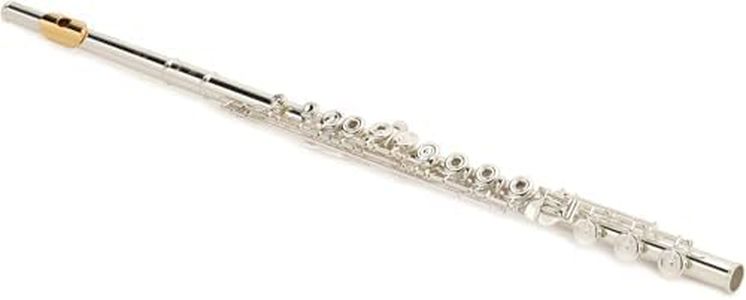10 Best Flutes 2025 in the United States
Our technology thoroughly searches through the online shopping world, reviewing hundreds of sites. We then process and analyze this information, updating in real-time to bring you the latest top-rated products. This way, you always get the best and most current options available.

Our Top Picks
Winner
Glory Closed Hole C Flute With Case, Tuning Rod and Cloth, Gloves, Nickel Siver
Most important from
5154 reviews
The Glory Closed Hole C Flute is a solid choice for beginners and intermediate players looking for a high-quality instrument at an affordable price. Made from durable cupronickel material, this flute offers both robustness and a pleasant tone. The 16-key design and closed holes make it easier to play, which is particularly beneficial for those who are just starting out. The leather pads help ensure good water resistance and airtightness, contributing to consistent performance.
Another plus is the high-grade needle springs, which promise long-term reliability and smooth key action. Included accessories like a protective case, tuning rod, and cleaning cloth add convenience for maintenance and transport, while the gloves help keep fingerprints at bay. However, the flute's nickel material might not resonate as well as silver or gold options for more advanced players who seek richer sound qualities. Also, the offset G key design could be slightly less ergonomic for some users compared to the inline G option.
Despite these minor drawbacks, the Glory Closed Hole C Flute stands out in its price range, boasting an impressive balance of quality, durability, and practicality for new and developing flutists.
Most important from
5154 reviews
Yamaha YFL-382H Intermediate Flute with Inline G and Gold-plated Lip Plate
The Yamaha YFL-382H Intermediate Flute is designed for advancing players looking for a quality instrument with some professional features. One of its standout features is the combination of a nickel silver body and a sterling silver headjoint. This blend offers durability while enhancing sound quality, making it a good choice for intermediate musicians aiming for a richer tone. The gold-plated lip plate adds a touch of luxury and can provide a warmer, more comfortable playing experience.
The inline key system might appeal to those who prefer a more traditional hand positioning, although some players may find the inline G less ergonomic compared to an offset G, especially during lengthy practice sessions. The flute also features a modern style and silver-plated keys, which are visually appealing while maintaining the instrument's quality. However, it is worth noting that some players might prefer a fully sterling silver body for an even richer sound.
Additionally, the flute's footjoint is made from nickel silver, which ensures robustness but may not offer the same tonal depth as a sterling silver footjoint. The Yamaha YFL-382H is a reliable and well-crafted instrument, making it a strong contender for intermediate flutists who value both sound quality and durability. It's essential to consider personal preferences regarding the inline G key and the mix of materials used in the flute's construction.
Pearl Flutes 665RBE1RB Quantz Series Intermediate Flute
The Pearl Flutes 665RBE1RB Quantz Series Intermediate Flute is a solid choice for intermediate players. This flute stands out with its Offset G key, making it more comfortable for players with smaller hands. Additionally, it features an open hole design which can help improve finger positioning and intonation, although it might require a bit of an adjustment period for those used to closed holes. The B-Footjoint extends the lower range, allowing for more versatility in the pieces that can be played, which is a nice feature for advancing musicians.
The included French style case and cover provide a touch of elegance and practicality for transportation and storage. Made of silver-colored pearl material, it offers a sleek and professional appearance. However, it's important to note that the instrument key is set to E, which is a bit unconventional as most flutes are in the key of C. This might require some adaptation for those accustomed to standard key flutes.
Despite being listed at #423 in Flutes on a popular sales site, its features and build quality make it a worthy contender for intermediate players looking to improve their skills. The Pearl Flutes 665RBE1RB might not be the top-selling model, but its quality and thoughtful design make it a reliable option for those progressing in their flute playing journey.
